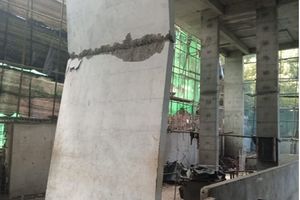Premium
Role played by news outlets in copycat burning of schools
What you need to know:
Of course, the torching of dormitories is not mono-causal. Many factors contribute to the contagion.
At the same time, we must accept that the media must report the burning of schools, as this is an important issue of public interest. Arson is also a serious crime equivalent, in terms of punishment—it carries a life sentence—to manslaughter, misprision of treason, sedition and trafficking in narcotics. And when a person is burned to death, it can amount to a murder case, punishable by death. The media cannot ignore a crime of such enormity.
What we need is to balance the public interest in publishing news about the school arsonists and reducing copycat behaviour.
All manner of explanations have been given as the cause of the series of school arsons that have swept across the country in the past eight weeks.
The explanations have ranged from the recent rules and regulations introduced by Education Cabinet Secretary Fred Matiang’i to poor school management.
One of the explanations is that the media have fuelled the arsons. It’s suggested the media, by covering the school fires in great detail and graphic pictures, have encouraged other schools to imitate the acts.
One of our readers, Joab Amakoye, was very sure this is the case. “Good morning,” he said on Thursday last week. “It is high time our media houses matured. The feverish reporting on school fires and the attendant statistics is creating lots of excitement in learners. Copycat scenarios are what are happening. Do tone down in your reporting. You are fanning the fires.”
Mr Amakoye is not alone. For example, Catholic bishops who said they had carried their own investigation, also said media reports may be triggering copycat arsonists.
These statements by our readers echo studies in America and Europe. Research in those countries show there is strong evidence that media coverage of teenage crimes such as suicide, school shootings and arson plays into the tendency of other young people to imitate.
MANY COPIED
A lot of the behaviours by young people are copied, according to a study published on May 2, 2014, in The Lancet Psychiatry journal. “It just seems so frightening, but a lot of behaviours are modelled,” says Dr Madelyn Gould, the lead author of the study, which was looking specifically at copycat suicide. It found that the more sensational the reporting, the more details provided, and the more prominent the story’s placement, the more likely it was that additional suicides would follow.
The theory of copycat criminal acts fuelled by media coverage is grounded in the social learning theory that holds that when, for example, a student identifies with an arsonist he might choose—consciously or unconsciously—to be one, believing that he shares the same problems with the arsonist. We have seen these copycat acts most dramatically in American high schools where one shooting incident follows another in a contagion.
The spread of a behaviour pattern through suggestion or imitation is real. It often happens when the incidents are reported prominently or in detail with photos and dramatic or sensational headlines in the print media or television. This imitation phenomenon first came to light in 1774 when sociologist David Phillips coined the term “The Werther Effect”, which refers to the lovelorn protagonist who committed suicide in the novel The Sorrows of Young Werther.
Many young people who read the book committed suicide by mimicking Werther who shoots himself with a pistol after he is rejected by the woman he loves. The book was subsequently banned in several countries because of its copycat effect. Phillips explains that teenagers are highly imitative, influenced by fads and fashions in general.
It is, indeed, difficult to discount this theory in the Kenyan teenage scene today, especially with regard to the trend of torching dormitories. Of course, the torching of dormitories is not mono-causal. Many factors contribute to the contagion.
At the same time, we must accept that the media must report the burning of schools, as this is an important issue of public interest. Arson is also a serious crime equivalent, in terms of punishment—it carries a life sentence—to manslaughter, misprision of treason, sedition and trafficking in narcotics. And when a person is burned to death, it can amount to a murder case, punishable by death. The media cannot ignore a crime of such enormity.
What we need is to balance the public interest in publishing news about the school arsonists and reducing copycat behaviour.
Send your complaints to [email protected]; call 0721989264.





